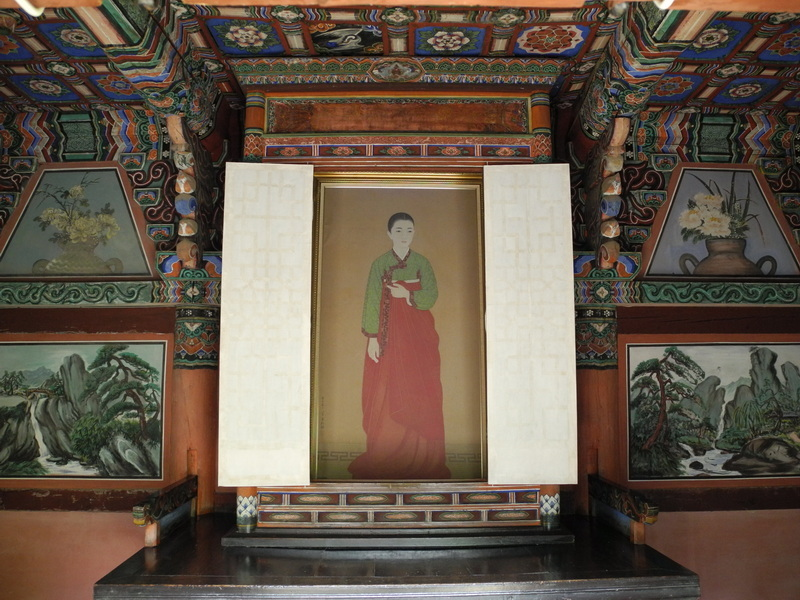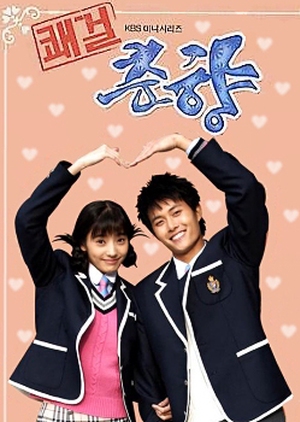The Story of Chunhyang: Through the Melodious Medium of Pansori
By Diane Dooley
What Is Pansori?
Pansori is probably one of the most well-known “traditional” Korean art forms outside of Korea, commonly referred to as “Korean opera.” (Or, more likely these days, K-Opera!) Pansori is an oral narrative and has been popular amongst Koreans since its inception in the seventeenth century. It was originally performed by singers known as kwangdae in rural villages or marketplaces. Today, it is even performed in large concert halls to considerably larger audiences.
A pansori performance involves only two performers: a singer (kwangdae) and a drummer (kosu). This simplicity meant that it could be performed virtually anywhere. Traditionally, the singer would recount a tale from the twelve-work repertoire (madang), such as The Song of Chunhyang. Pansori singers vary both rhythm and melody to reflect changes in circumstance and atmosphere as the story develops, as well as a character’s emotional state. Alternating between sung and spoken passages, pansori is an excellent example of a multimodal narrative art form.
Pansori is believed to have developed from shaman songs, which are long oral narratives mixing spoken passages and singing. Research has noted that shaman songs and pansori narratives (from our very own Jeolla-do!) are often identical or are at least very similar in terms of the techniques used and structure. However, shaman songs are intrinsically “sacred.” The main character is a shamanist deity who possesses special powers. Importantly, shaman songs serve religious and spiritual purposes. Pansori, on the other hand, are oral narratives that realistically depict the problems arising in commoners’ daily lives. Thus, the worldview of pansori revolves around everyday life.
In pansori performances, colloquial speech, for example, was sometimes used to explain the plot and parts of the dialogue. As such, pansori performances are often incredibly long – a full performance of The Song of Chunhyang can take up to seven or eight hours!
Significance of Pansori
It is often argued that the origin of Korean literature as it exists today can be traced back to pansori. As pansori became fixed narratives, circulating as reading materials, they created a readership for pansori fiction and contributed significantly to the development of realistic depictions of the commoner’s social conditions during the Joseon period.
Pansori’s establishment as a separate art form can be traced to social changes during the late Joseon period. Namely, the disruption of the Confucian idea of order and the simultaneous growth of the commoner class. Both acted to secularize shamanism, resulting in the belief that problems experienced by people in their daily lives could be affected by shamanist incantations weakened considerably. In summary, a demand for a more realistic and engaging art form grew exponentially during this period.
Pansori was very simply in its early stages, and its function was entertainment (unlike shaman songs, which served a spiritual and religious function), primarily because performers required, of course, an audience in order to be successful.
Pansori singers chose to refine old narratives that the masses were familiar with rather than create new ones; thus, an established pansori repertoire was transmitted from one generation to the next, and the number of works eventually reached twelve.
The establishment of the twelve pansori works as sophisticated musical and literary art forms also generated interest amongst Joseon’s elite literati during the eighteenth century. Yu Chinhan, for example, heard The Song of Chunhyang and was so impressed that he wrote the story in literary Chinese, elevating its status. Pansori, which had been derided by the elite as entertainment for commoners, gradually came to be appreciated as a sophisticated art form.

The Story of Chunhyang
Whenever spring rolls around, I cannot help but think of The Story of Chunhyang, with Chunhyang, (춘향) literally meaning “scent of spring.” The story is considered to be an important piece of Korean literature and an enduring part of Korea’s folk heritage.
Believed to have originated from the pansori, the story is still told today through different mediums. It is one of the most well-known “love stories” told on the Korean Peninsula. Several different versions of the story have been told and recorded at different points in time, as the story has been passed from generation to generation, being gradually altered and refined along the way. The Song of a Faithful Wife, Chunhyang, one of the most popular versions of the story, explores the relationship between women and Confucianism, frustrations with the strict Joseon social hierarchy, government corruption, and hypocrisy within society.
The Song of a Faithful Wife, Chunhyang featured the relationship between women and Confucianism because the latter had become the dominant ideology during the Joseon Dynasty, and significant changes affected women’s lives and their place in society. It would be inappropriate to portray women as victims of Confucianism because the ideology was dynamic – not just patriarchal in nature. The relationship between women and Confucianism was undeniably complex. For example, women often used Confucianism to their own advantage or to achieve some semblance of agency. This agency is well-conveyed in Chunhyang. In the version translated into English by Richard Rutt, the character Chunhyang is the illegitimate daughter of a yangban (person of nobility) and a kisaeng (female entertainer) who pursues a cross-class relationship with Mongryong, the son of the local governor in Namwon, North Jeolla. When his father is re-assigned to the capital, they are separated, and a new, corrupt governor replaces him. Chunhyang, considering herself to be a married woman, refuses when the new governor insists that she become his mistress. She employs Confucian ideals to do so, stating: “A subject cannot serve two kings, and a wife cannot belong to two husbands: That is my principle.”
Chunhyang is initially praised for this by the governor but is ultimately treated as a mere kisaeng and encouraged to comply with his orders. She then highlights the hypocrisy inherent within society, stating that “a woman’s virtue is the same for high ranks and low” and subsequently lists a number of kisaeng who were recognized for their “good character.” This scene demonstrates the frustration with hypocrisy within society at the time it was composed and the difficult position women were placed in due to it: Chunhyang is obligated to be virtuous and faithful to Mongryong but as the daughter of a kisaeng must also comply with the demands of the governor, who outranks her.
Notably, during the Joseon Dynasty, legislation was introduced to create a greater legal distinction between primary wives and secondary wives. Secondary wives and their children were seriously discriminated against. It is therefore interesting to examine Chunhyang alongside her mother. Wolmae, a kisaeng and a former yangban governor’s secondary wife, urges Mongryong to be cautious when he visits her to ask for permission to marry Chunhyang. She states that her deceased husband “mistook a kite for a falcon and called me to serve him,” which is self-deprecating and suggests that her husband’s infatuation or lust for her affected his ability to assess the social and legal ramifications of their relationship, and she saw this reflected in Mongryong. She warns him not to put Chunhyang through the same difficulties and explains that if he were to abandon Chunhyang, she would be left with nothing and would probably be unable to remarry.
Wolmae’s poor financial situation is a result of her status as a secondary wife. As she had no legal claim to an inheritance, she was not left any living expenses when her husband died. Despite her uncertainties, however, she remains optimistic that the pair could “make a break with the past,” conveying her desire for change. This desire for change was prominent in the Joseon Dynasty at the time.
Chunhyang also examines the political landscape in late Joseon. At the time, various scholar-officials controlled local governments. These local governments were often corrupt, and as a solution, the king would sometimes send secret inspectors to investigate and uncover any mismanagement. (This was one of the many roles undertaken by Jeong Yakyong, for example, from my previous article!) The corrupt governor in Chunhyang, and Mongryong’s appointment as a secret inspector later in the story, is a reflection of this real-life issue. In late Joseon, local governments profited by abusing the grain tax system: They extorted money through unethical loans. In his role as a secret inspector, Mongryong recites the following at a feast in honor of the governor: “Fine wine in golden cups is the common people’s blood / Viands on jade dishes are the common people’s flesh,” a biting criticism of the governor’s display of ostentatious wealth, earned by extorting money from farmers. Mongryong’s couplet was popular in works of Korean satire and its inclusion here, and in many other versions of Chunhyang, despite constant revision and refinement, suggests a longstanding appreciation of the couplet as well as the sentiment behind it.
Modern Versions

Many modern retellings of Chunhyang exist today. The most popular recent (relatively speaking) adaption of the tale is perhaps Sassy Girl Chun-hyang, a 2005 television drama series starring Han Chae-young, Jae Hee, Uhm Tae-woong, and Park Si-eun. The drama’s soundtrack features a mixture of modern rap and pansori, and was the first drama penned by the famous drama-writing duo Hong Jung-eun and Hong Mi-ran (“the Hong sisters”). However, instead of corrupt government officials and women’s relationship with Confucianism, this drama explores several key economic and social issues of the early 2000s. The endurance of Chunhyang is perhaps down to this adaptability, as well as its classic star-crossed-lovers plot.
Today, you can even visit a Chunhyang-themed park in Namwon, North Jeolla Province, a mere hour away from Gwangju by bus! Namwon, I should mention, is the traditional setting of Chunhyang. There you can visit a Chunhyang-themed park or participate in the regular Chunhyang Festival, which includes performances of the pansori narrative and a Miss Chunhyang Beauty Pageant. And, of course, Namwon is always a beautiful spot for enjoying Korea’s spring cherry blossoms!
Sources
Cho, Sung-won (2004). Trapped in the quest for realism: Mistaken equality in Namchang Ch’unhyangga. Korea Journal, 44, 102–122
Cho, Sung-won (2003). Waiting for the Sage King: The “political unconscious” of Namchang Ch’unhyangga. Korea Journal, 43, 240–266
Deuchler, Martina. (1992). The Confucian transformation of Korea: A study of society and ideology. Council of East Asian Studies, Harvard University.
Eckert, Carter J., et al. (1990). Korea old and new: A history. Harvard University Press.
Kim, Heunggyu. (2003). P’ansori. In Peter H. Lee (Ed.), A history of Korean literature. Cambridge University Press.
Kim, Yeongmin. (2011). Portrait of two women: Multiple layers of Confucianism in late Chosŏn Korea. In Yeongmin Kim & Michael Pettid (Eds.), Women and Confucianism in Chosŏn Korea. State University of New York Press.
Rutt, Richard. (1974). The song of a faithful wife, Ch’unhyang. In Richard Rutt & Kim Chong-un [Trans.], Virtuous women: Three classic Korean novels. Royal Asiatic Society, Korea Branch / Kwang Myong Printing.



